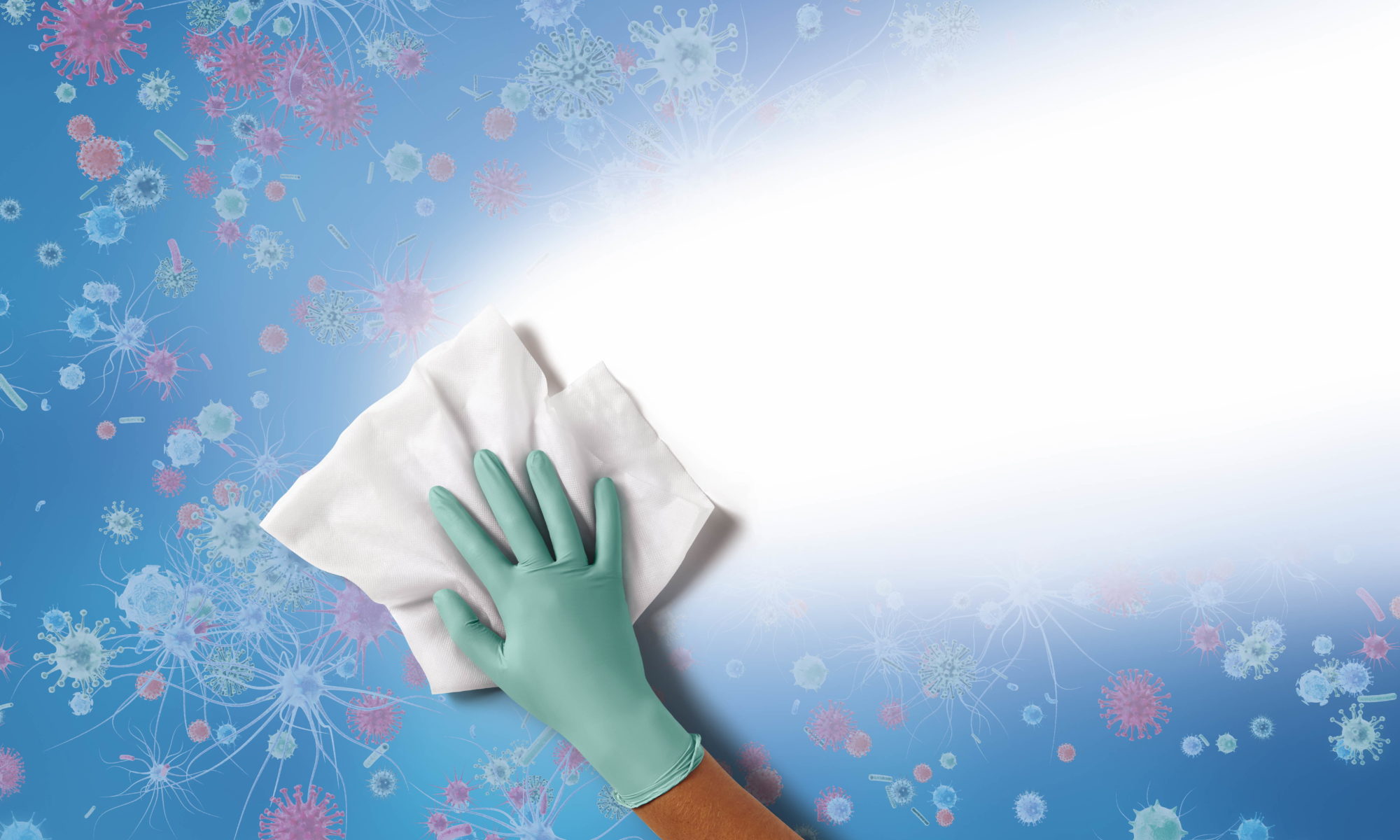Three Key Factors to Consider When Disinfecting Surfaces

Understanding the difference between cleaning and disinfecting, and the meaning behind log reduction and contact time
By Medline Newsroom Staff | May 4, 2020
The COVID-19 pandemic is pushing facilities across the country to the limit and more are becoming tight on resources. As a result, some healthcare workers in non-environmental service (EVS) roles may increasingly find themselves being asked to help clean and disinfect surfaces. Megan Henken, Medline’s director of EVS product management, offers the following advice for those now stepping into these roles, to help guide them in good practice.
#1 Understand the difference between cleaning and disinfecting.
Cleaning, which refers to removing soil, is one step in the process, while disinfecting, which refers to the elimination of microbes, is another. While both are important, Henken says that many people confuse the two, and often overlook the fact that cleaning must often precede disinfection.
“The instructions for use for most disinfectants state you have to remove gross soil before you can use them. That’s because if there’s soil on the surface and you’re applying the disinfectant, it reduces the efficacy of the disinfectant,” she said.
#2 When disinfecting, keep the surface wet for the entire contact time.
Contact time refers to the amount of time a surface must remain visibly wet while a disinfectant is applied. It can range anywhere from 15 seconds to ten minutes depending on the product. According to Henken, healthcare workers need to play close attention to the contact time for the disinfectants they use, and ensure that they’re keeping surfaces wet for the entire duration.
“If you fail to keep the surface wet for the entire contact time, you may accidentally not end up disinfecting the way you intended,” she said.
#3 Consider log reduction when choosing disinfectants and deciding how frequently to use them.
Log reduction is a mathematic term that refers to the relative number of microbes eliminated by a disinfectant. A disinfectant with a three log reduction eliminates or inactivates 99.9% of microbes; one with a four log reduction eliminates 99.99% of microbes, one with a five log reduction eliminates 99.999%, and so on.
Common supermarket disinfectants have a three log reduction, meaning they kill 99.9% of germs. Meanwhile hospital-grade cleaning products typically have a six log reduction meaning they kill 99.9999% of microbes, but with most medical grade disinfectants on back order, Henken says facilities are increasingly buying whatever they can get their hands on.
While at a glance the differences between a three versus a six log reduction may appear minor, with a little bit of math Henken shows how they can be significant.
“Consider this example: we have 1 million bacteria on a surface which reproduce every 20 minutes, which is typical for bacteria. If we apply a disinfectant with a three log reduction to that surface, 999,000 of those bacteria would be eliminated and 1,000 would remain. But if we applied a disinfectant with a six log reduction instead, only 1 bacterium would remain,” she said.
The differences become more glaring as time continues.
“When we are left with 1,000 bacteria, it would take a little over three hours for their numbers to return to one million. But if we are left with just 1 bacterium, following the same period of time, there would only be around 1,000 bacteria on the surface,” Henken said. “This just goes to show how important log reduction is when it comes to pathogens. You have to clean a lot more frequently if you’re using a three log because it’s not killing nearly as much of whatever’s on the surface.”
Learn more about how Medline is helping health care workers standardize surface cleaning and disinfection through a comprehensive system.
Medline Newsroom Staff
Medline Newsroom Staff
Medline's newsroom staff researches and reports on the latest news and trends in healthcare.
